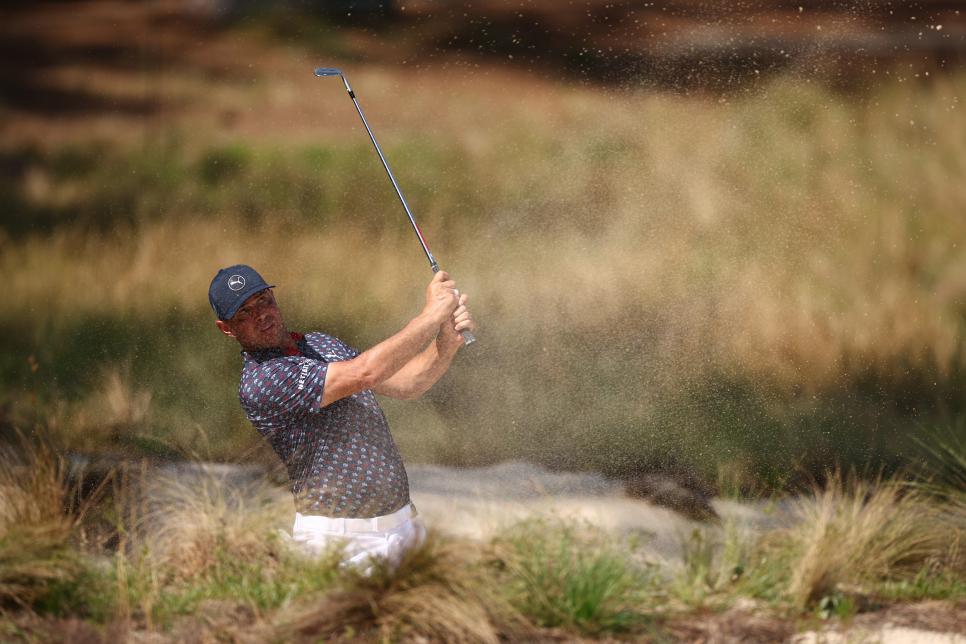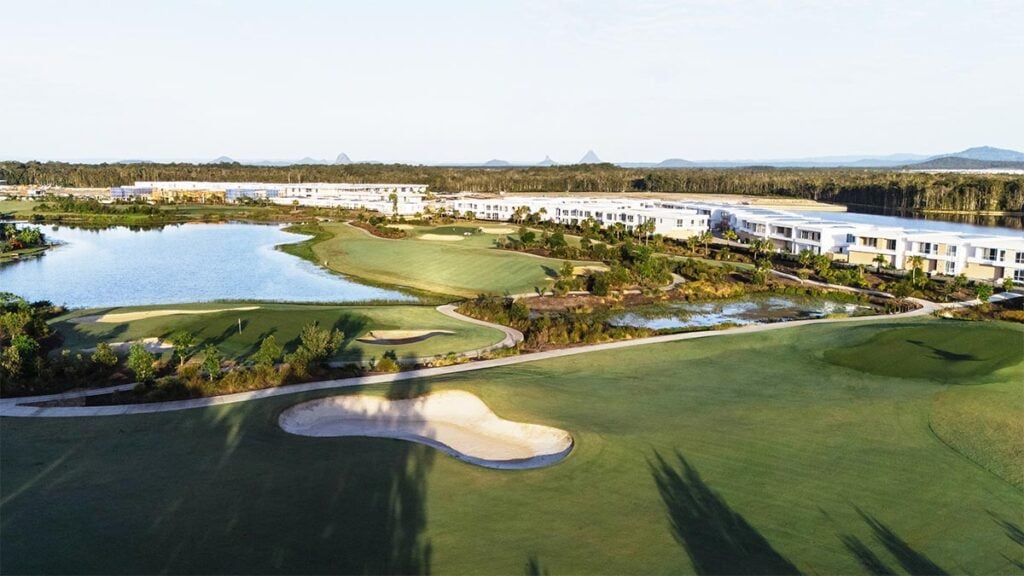The greens are publicised as Pinehurst’s defence against the US Open field, and the assertion is not wrong. The putting surfaces have become more domed and cambered than Donald Ross ever intended, leading to a challenge that’s akin to deciphering a Rubik’s cube if the cube could fight back. Yet it’s a test that’s also fair, in the sense that what is presented is consistent from the first green to the 18th. Which is why Pinehurst’s true resistance, its true beauty, is found in the variability and unpredictability of the journey from tee to green.
Ross would love to see the state of Pinehurst’s sandscapes off the fairways and greens, one of the more idiosyncratic features of the venerable property. The native areas – a fusion of sand, pinestraw and herbage – was a vital aspect of Pinehurst No.2’s restoration more than a decade ago, replacing the bermuda-grass rough that had myopically been installed by Robert Trent Jones in 1974. The sandscapes are not just a nod to Ross’ original vision, to say nothing of providing an aesthetically pleasing framing of the course, but the restoration also allowed Pinehurst to become more eco-friendly thanks to the reduction of water, fuel and resource usage.
The sandscapes were brought back in time for Pinehurst’s dual hosting of the men’s and women’s US Opens in 2014, and on a surface level there haven’t been many dramatic changes in the ensuing 10 years to the No.2 course. Conversely, the sandscapes of then are not what they are now, and the variance between the two could be the X-factor to this championship.
US Open 2024: The USGA’s new anchor sites have a chance to nudge open their doors
For starters, there has been more natural vegetation that has grown in during the past decade now that the sandscapes have settled. At the time of the restoration the native areas featured mostly wiregrass mixed with sandy soil. Now, golfers with wayward shots will have to deal with an uptick in verdure and flora, all of which – while cultivated and cared for by the maintenance staff – is indigenous to the terrain. One plant you may hear a lot of this week will be “pineweed”, which could produce anything from fliers to punch-outs to chunks for any wayward balls that find themselves in the pineweed’s grasp.

The Pinehurst staff has also added selective wiregrass to the native areas, especially around popular landing spots off the tee, specifically for the US Open. Because Pinehurst no longer has rough, at least in the traditional sense of the US Open rough seen at a Winged Foot or Pebble Beach, the wiregrass acts as Pinehurst’s punishment for a lack of driving accuracy. Interestingly, a lot of this wiregrass will be taken out after the US Open, and with good reason: with the amount of play the No.2 course receives as one of the USA’s golf meccas, amateur rounds would come to a halt if this amount of wiregrass remained in play. And because of a good run of weather during the northern spring, the wiregrass is thick in a fair amount of areas.
The upshot means there’s less of a chance a player will receive a clean lie in the soil and sand than viewers saw in 2014, yet that option still exists. Together, these obstacles create a volatility that will occasionally allow for bravado while still punishing any shots less than good. Players have noticed as much during their preparation when it comes to their strategy off the tee.
“The spots get really tight when you hit driver, just knowing that the ball will bounce, will roll, and then you sort of pick and choose your spots,” said reigning PGA champion Xander Schauffele. “Do I want to be 3-iron, 7-iron to the middle of the fairway or 8-iron versus driver, maybe hit the fairway or sort of have to hack out, maybe catch a good lie.”
“Even in a year the native areas have grown in a lot more,” added former US Open champ Webb Simpson. “So that’s part of the prep we were doing, is one of us take the right side and one take the left and see which one’s thicker. Quite a few holes, one side is a little more penal than the other.
“It’s hit or miss. The way we’re looking at it, is if you hit, I don’t know, 15 drives for the week in the native area, you’re going to get some bad lies, some good lies; you just got to take it from there. Can’t get too down. You might play with a guy, y’all hit in the same area, he hits it on the green, and you have to pitch out. That’s just part of it.”
US Open 2024: Wyndham Clark warns Pinehurst’s greens are already ‘borderline’
While Pinehurst’s greens will get all the love this week (especially if they continue to be “borderline” as assessed on Monday), it’s the slight change to the native areas that could prove the arbiter of this US Open. It might not be fair, and it may involve providence, but playing out of the sandscapes will be a test, and that’s what the US Open is all about.


